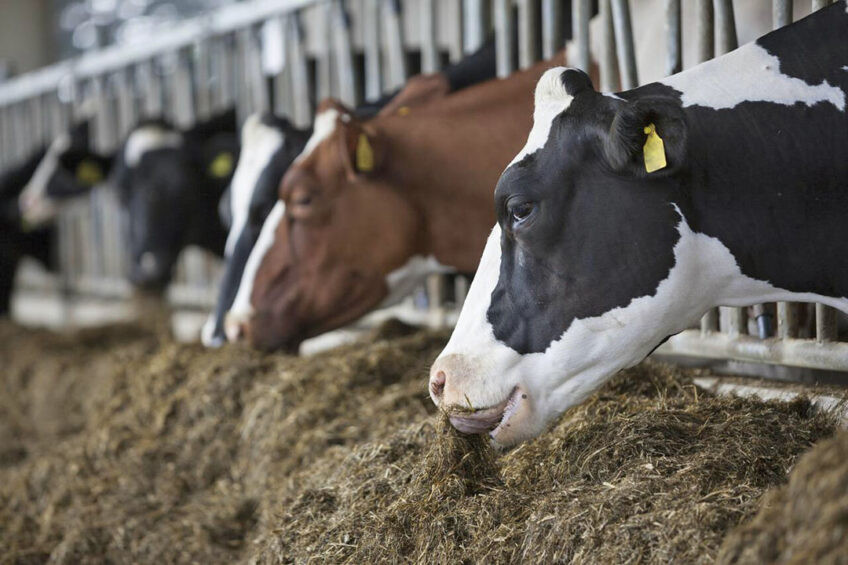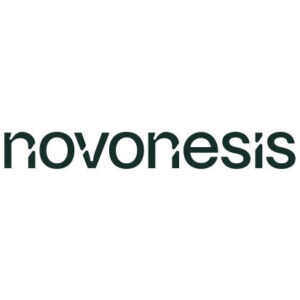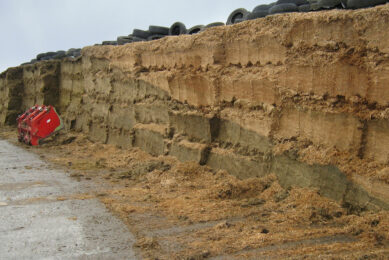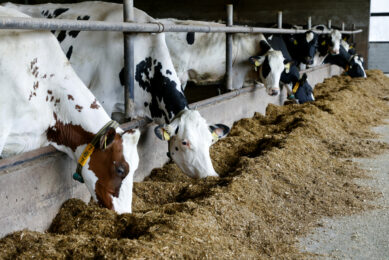The power of good bacteria in favour of our dairy herd

Regardless of age and productive stage, ruminants will likely face daily challenges throughout their lives, including those related to the environment, feed hygiene and quality, and required management activities, such as weaning, transition period, and vaccination. These challenges may occur together or in a short period of time, likely impacting productive performance, and overall welfare status of the dairy herd. What if utilising good bacteria could help achieve a healthy herd?
It is becoming more evident that, to achieve the genetic potential of our herd, the animals must be healthy. In other words, the targeted performance (productive) can only be achieved if the herd’s health status is ensured. This applies to pre-weaning dairy calves, developing heifers, and lactating primiparous and multiparous dairy cows. However, as aforementioned, this needs to be achieved in scenarios where our animals are facing different challenges every day and, in some instances, several times on the same day.
Natural solutions
What if we had natural solutions that could support the health of our herd? And what if these natural solutions were to be available daily to our herd, ensuring the required support? And lastly, what if we tell you that these solutions are already available in different regions of the globe?
The natural solutions we would like to highlight are the good bacteria, also known as direct-fed microbials (DFM). Per definition, bacteria-based DFM are live microorganisms that, when offered in adequate amounts, confer a health benefit to the host (WHO, 2001). In today’s article, we will focus only on those bacteria-based DFM, aiming to demonstrate what they can bring to your herd and, subsequently, to your operation and to you, as a dairy farmer, nutritionist, or veterinarian.
Before diving into the benefits of bacteria-based DFM, it is important to highlight a few features that a bacteria-based DFM might present to support the health and performance of our dairy herd:
- It must be able to remain viable following feed preparation, regardless of whether we are talking about a premix, mash feed, milk replacer, pasteurised milk, or a pelleted supplement.
- It must be able to remain viable once consumed by the animal and overcome all challenges in the gastrointestinal tract (GIT), including the presence of other bacteria, feed additives, and compounds produced by the host.
- It must be viable and efficacious once it reaches the target location, such as the rumen and lower GIT of the host.
Once these premises have been checked, the goal is to understand how these bacteria-based DFM might support the health of our herd. Again, healthier animals tend to be more productive in your operation.
There are several ways that bacteria-based DFM support the health of the herd, but it is important to mention and highlight that these benefits might be dependent on the species, genus, and strains of the bacteria used. From a global standpoint, the most common species used as DFM for cattle are Lactobacillus, Enterococcus, and Bacillus.
Modulation of the nutrient degradation and fermentation
With the exception of the early-life of a calf, which does not have a fully developed rumen, the DFM will reach the rumen prior to the lower GIT. This means that most DFM, if not all, are expected to “bring some benefit” at the rumen level. Usually, this improvement may be translated into more nutrient degradability and a modulation of the fermentation of the feedstuffs, in a way that the rumen becomes more efficient from an energetic standpoint. Indeed, some bacteria used as DFM have the ability to produce enzymes that will optimise nutrient degradation and modulate the production of volatile fatty acids in the rumen, yielding a more efficient environment. Nonetheless, it is also important to mention that the enzymes can be active also in the lower GIT, improving nutrient utilisation throughout the GIT of the host.
Eubiosis, competitive exclusion, and DFM
It is known that the good bacteria that are fed to the herd may also impact the growth and abundance of other good bacteria both in the rumen and in the lower GIT, through the production and release of bioactive compounds required by these commensal good bacteria. A GIT environment with more commensal bacteria will be more stable, which, in turn, may be more resilient to the upcoming challenges. One example is the ability of the good bacteria to competitively excluded the undesirable bacteria, for example, as they may bind into the intestinal cells (enterocytes) so that fewer binding sites in the enterocytes are available for potential challenges to bind to, which may potentially mean fewer injuries to the cells.
Mucin production and DFM
Mucin is an integral part of the mucous barrier that supports the epithelial lining of the GIT. The larger the mucous barrier is, the harder it may be for the challenges reaching the lower GIT to cause any damage that can compromise the integrity of the intestinal epithelial cells. Bacteria-based DFM, such as Lactobacilli and Bacilli, have been shown to stimulate the production of different types of mucins under laboratory assays.
Biofilm formation and support of the intestinal epithelial cells
One of the proposed ways some good bacteria (i.e., Bacillus spp.) support the health of the GIT is by forming biofilm in the epithelial cells. In other words, the bacteria group themselves in the epithelial cells of the GIT and therefore, reduce space for the challenges arriving in the GIT to cause any potential adverse effect.
Integrity of the intestinal cells and DFM
Another point of interest in bacteria-based DFM relates to the fact that they may be able to stimulate the production of proteins that are associated with the maintenance of integral intestinal epithelial cells. This ensures that the intestinal epithelial cells are kept tight and alleviate the potential challenges of reaching the bloodstream at a greater extent, in a process known as “leaky gut”. Previous research has demonstrated substantial productive losses (dry matter intake and milk yield) in dairy cows suffering from this syndrome.
Additional effects
Bacteria-based DFM may also stimulate the production of compounds associated with modulating the immune system in the GIT, ensuring proper maintenance of its health. For example, antioxidant enzymes may be stimulated following the feeding of good bacteria (Cordeiro et al.; in preparation). Moreover, immunoglobulin A (IgA), the main Ig at the lower GIT level, production may be greater when a Bacillus-based DFM is fed.
In this article, we introduced general features of bacteria-based DFM that may be associated with its support on the health of our dairy herd. It is noteworthy to say that a healthier animal will be more productive and more efficient, which in turn, will result in a more sustainable dairy production.
Stay tuned for upcoming articles related on how the bacteria-based DFM from Novonesis may benefit your dairy operation!
References are available on request.




